Al-Madinah, the Radiant City, buzzes with a rich tapestry of history woven into its very being. Its name transcends mere geography, embodying the brilliant legacy of Prophet Muhammad and the birth of Islam. In 2024, embark on a pilgrimage not just of the soul but of the senses as you journey into the heart of Islamic history through these breathtaking historical sites:
Table of Contents
The Permanent Importance of Al-Madinah Historical Sites
Beyond the shimmering beauty of Al-Madinah, the Radiant City, lies a deep historical and cultural importance. Its magnificent sites are not simply bricks and mortar; they are living testaments to a vibrant past, telling stories of faith, strength, and the foundations of Islamic civilization. Exploring these treasures is not just a sightseeing tour; it’s a captivating pilgrimage into the very soul of Islam.
Making a Tapestry of History:
Al-Madinah historical tapestry is carefully woven with threads of migration, community building, and divine guidance. It was here centuries ago that Prophet Muhammad (PBUH) established the first Islamic state, laying the foundation for a civilization shaped by faith. Every street echoes with the whispers of his migration from Mecca, a journey that marked the beginning of a new era. Each landmark stands as a silent witness to important moments in Islamic history, from the construction of the first mosque, Quba, to the Battle of Uhud, a testament to the solid faith of the early Muslims.
Immerse Yourself in Al-Madinah Richness:
Exploring these historical sites is more than just ticking boxes on a tourist plan. This is an unforgettable journey into the heart of Islamic culture. The magnificent Prophet’s Mosque, with its magnificent green dome, transports you to the center of Prophet Muhammad’s life and teachings. Walking onto the sands of the Quba Mosque, the first structure to be constructed, sends shivers down your spine as you follow in the footsteps of the early believers. Standing among the weathered stones of Jannatul Baqi, where Prophet Muhammad’s family and his companions rest, offers a deep reflection on the brief nature of life.
Beyond the Sites, a Living Legacy:
The importance of Al-Madinah historical sites goes far beyond the physical structures. They are living representations of Islam’s rich heritage, inspiring reverence and reminding us of the values that built this amazing civilization. They continue to serve as places of pilgrimage and spiritual growth, attracting millions of Muslims every year to take in the city’s radiant aura. The lessons written in these stones—of unwavering faith, community spirit, and unwavering dedication—resonate deeply with believers today, offering guidance and inspiration for generations to come.
Therefore, venturing into Al-Madinah historical sites is not just a historical exploration; it’s a spiritually enriching experience, a connection to the roots of Islam, and a chance to observe the enduring legacy of a civilization shaped by faith. It’s a pilgrimage that whispers stories of the past, resonates with the present, and offers hope for the future.
Top Historical Sites to Visit
1. Al-Masjid an-Nabawi (The Prophet’s Mosque):
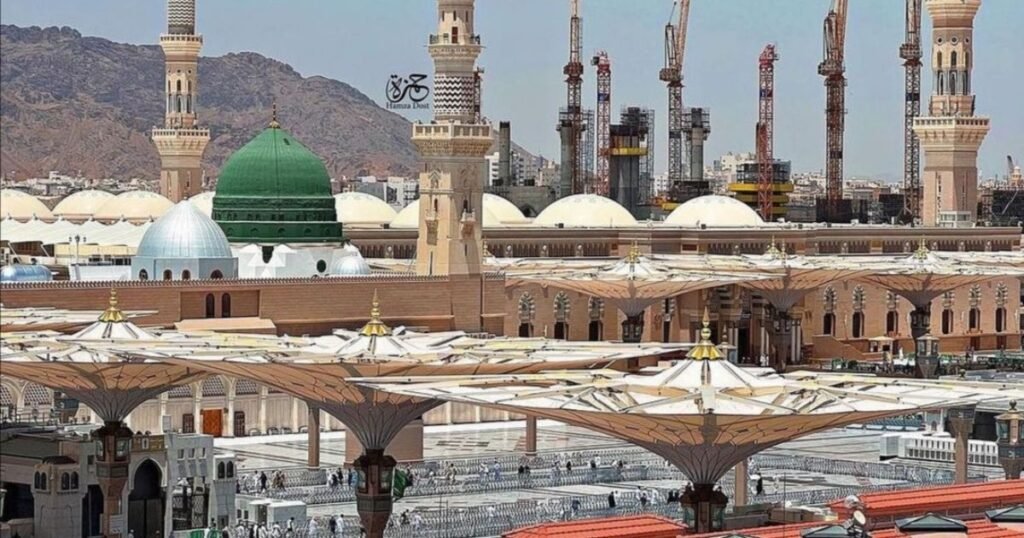
The crown center of Al-Madinah, this magnificent mosque whispers tales of Muhammad’s life and faith. Marvel at the beautiful Green Dome, bathe in the quiet of the Prophet’s Chamber, and trace the footsteps of history where pilgrims have prayed for centuries.
2. Quba Mosque:
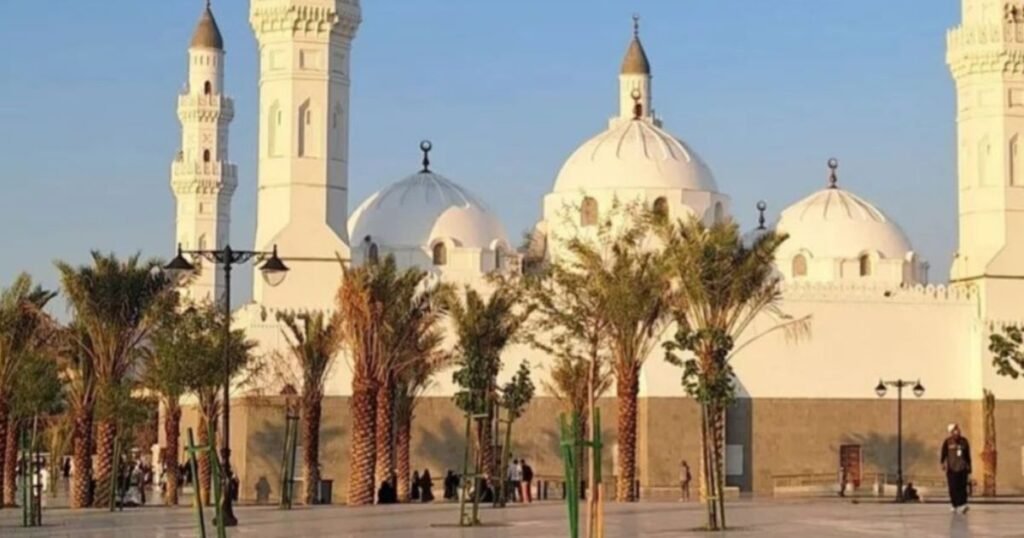
Go back in time to the very first mosque built by Prophet Muhammad. Located outside the city center, this humble yet significant structure reflects the spirit of the early Muslim community. Feel the sand beneath your feet as you retrace the Prophet’s journey from Mecca and understand the foundations of Islamic faith.
3. Masjid al-Qiblatain (Mosque of the Two Qiblas):
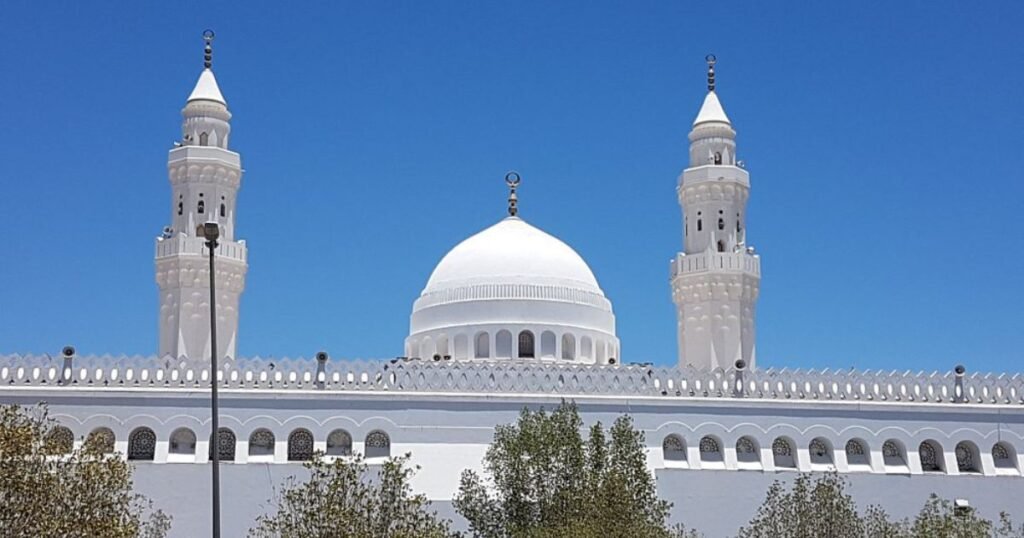
Witness the important moment when the direction of prayer shifted from Jerusalem to Mecca. This mosque, with its unique double mihrab, whispers stories of divine guidance and stands as a testament to Islam’s evolution.
4. Uhud Mountain and The Battle of Uhud Site:
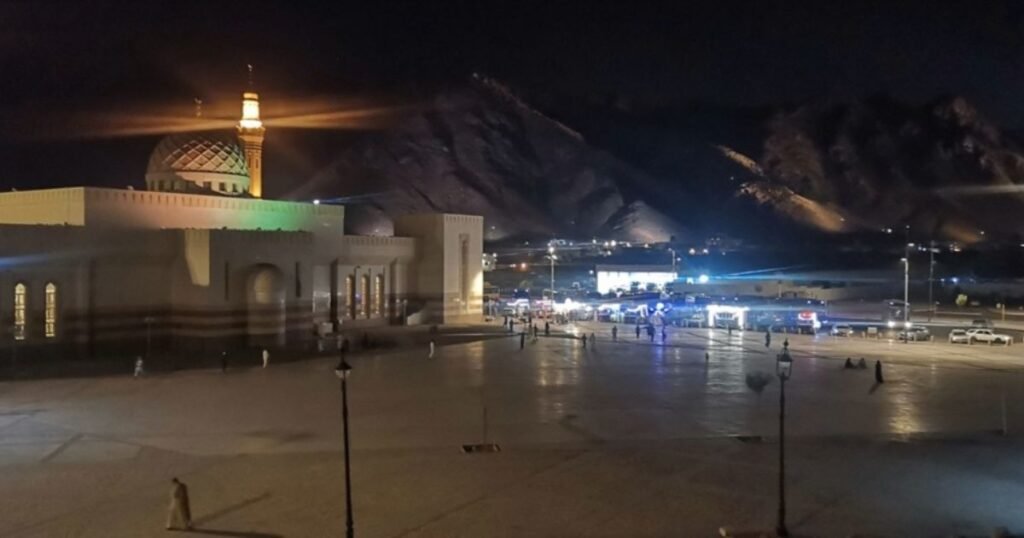
Hike the mountains of Uhud, where the second battle between Muslims and Meccans unfolded. Reflect on the sacrifices made for faith and stand amidst the serene mountains, echoing with the whispers of history.
5. Jannatul Baqi (The Graveyard of Baqi):
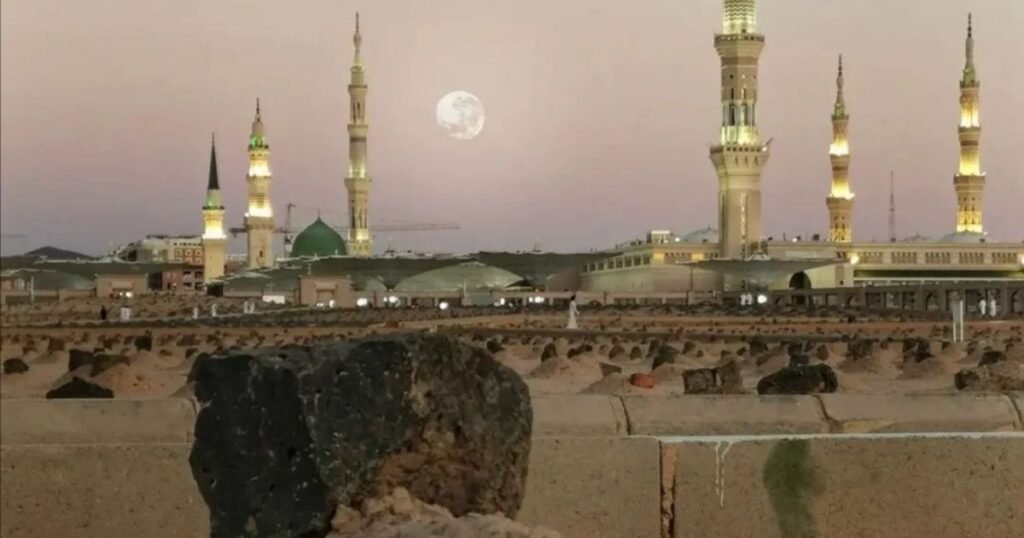
Pay your respects at the final resting place of Prophet Muhammad’s family and his companions. This sacred ground, shrouded in respect, invites prayer and reminds us of the ephemeral nature of life.
6. Dar Al Madinah Museum:
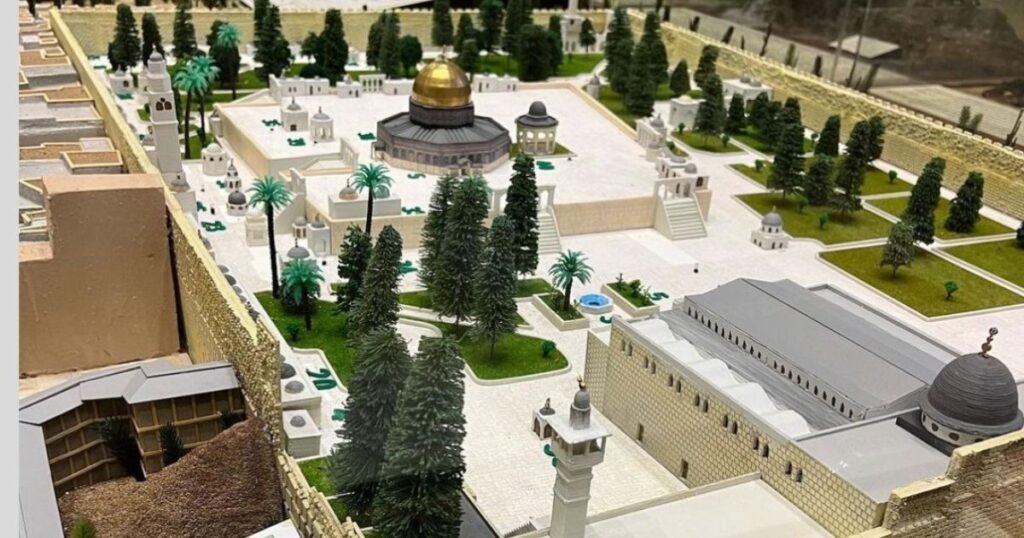
Journey through a kaleidoscope of Al-Madinah’s vibrant past. This captivating museum showcases archaeological treasures, Islamic artefacts, and exhibits that bring the city’s history to life.
7. Mada’in Saleh (Hegra):
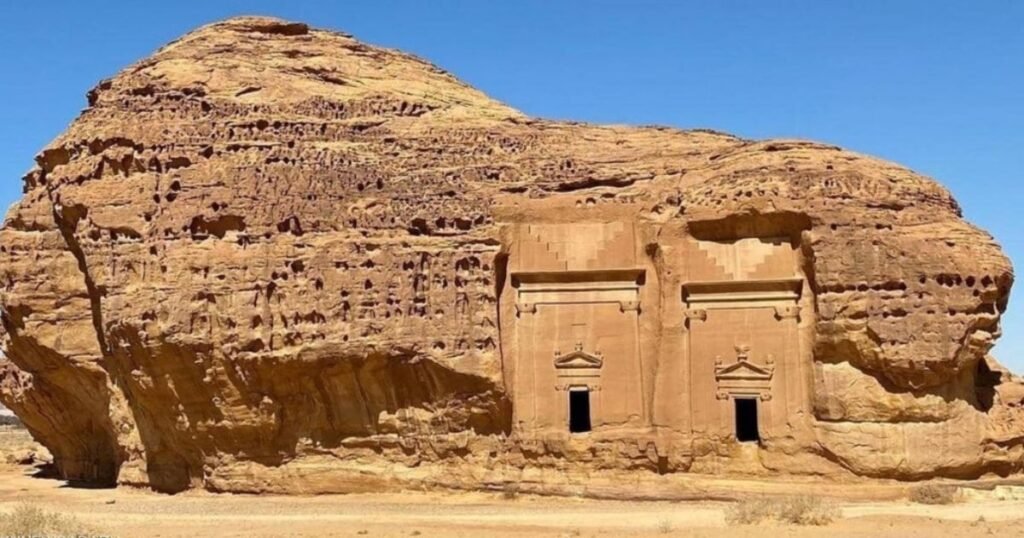
Explore beyond the city center to the UNESCO World Heritage Site of Mada’in Saleh. Carved into towering sandstone cliffs, these Nabataean tombs stand as mesmerizing testaments to a bygone era, whispering tales of caravans and ancient civilizations.
8. Al-Hejaz Station:
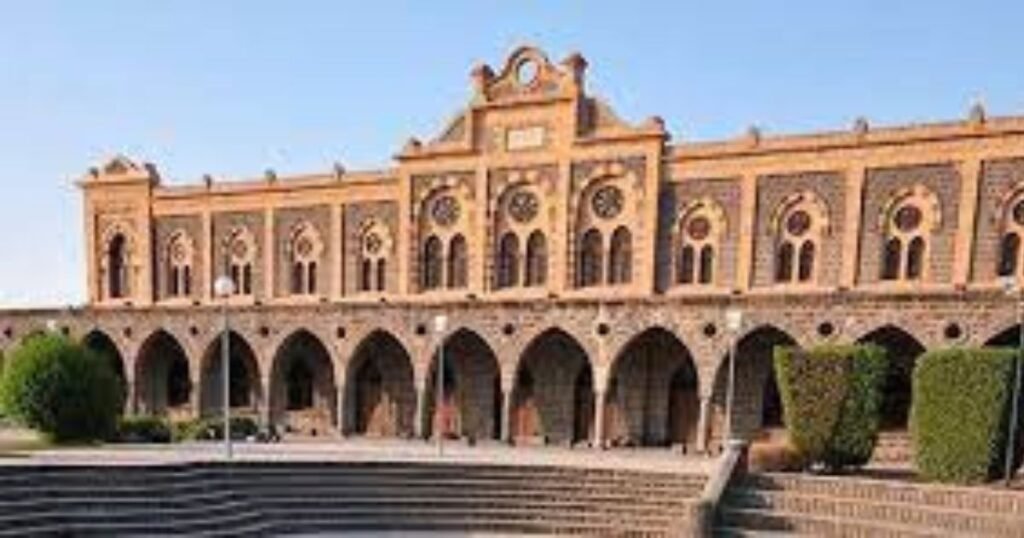
Relive the romance of the railway at the historic Al-Hejaz Station. Step back in time to when pilgrims embarked on the difficult journey to Makkah by train, and imagine the excitement and anticipation that filled the air.
9. Quba Castle:
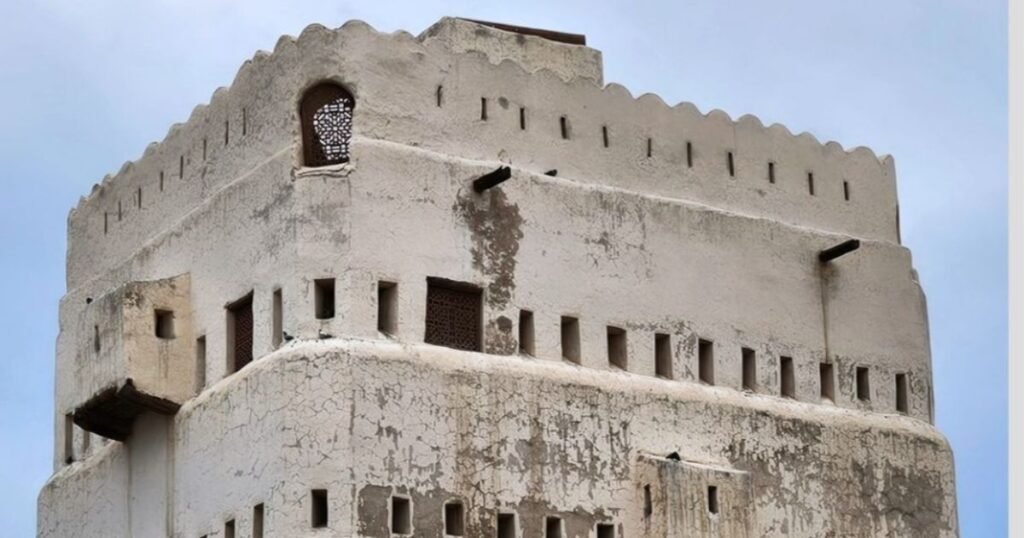
Explore the ruins of this ancient fort, once a vital link on the trade route between Makkah and Yemen. Immerse yourself in the whispers of desert caravans and imagine the echoes of ancient merchants and travelers.
10. The Seven Mosques:

Embark on a spiritual journey through the seven historic mosques scattered around Al-Madinah. Each with its own unique story and significance, these mosques offer a glimpse into the city’s rich Islamic heritage and the deep faith that permeates its very soul.
Make Your Visit to Al-Madinah Memorable: A Traveler Guide
Making the journey to Al-Madinah, the city of light, is more than just a sightseeing trip; it’s a pilgrimage of the soul, a chance to step into the vibrant tapestry of Islamic history and faith. To make your visit truly memorable, here are some tips to guide you:
1. Immerse Yourself in the Spiritual Atmosphere:
- Dress modestly: Out of respect for the city’s holy nature, dress modestly and formally. Men should wear long pants and shirts, while women should cover their hair and wear loose-fitting clothing.
- Observe prayer times: Plan your sightseeing around the five daily prayer times, taking the opportunity to join in congregational prayers at the Prophet’s Mosque or other historic mosques.
- Practice mindful silence: While exploring holy sites, maintain a respectful manner, speak softly, and avoid loud conversations.
2. Navigate the City and its Historical Treasures:
- Plan your schedule: With an overload of historical sites, prioritize your must-sees based on your interests and available time. Consider purchasing a guidebook or hiring a local guide for deeper insights.
- Embrace public transportation: Taxis and cab services are easily available, but consider using the city’s extensive bus network for a more local experience.
- Explore beyond the city center: Venture out to Mada’in Saleh, an ancient Nabataean city carved into sandstone cliffs, or Uhud Mountain, where a pivotal battle in Islamic history took place.
3. Savor the Local Culture and Flavors:
- Indulge in Madinan cuisine: Sample traditional dishes like Madinah dates, Madinah Mandi (slow-cooked rice with meat), and Umm Ali, a sweet milk bread pudding.
- Shop at the bustling souqs: Immerse yourself in the vibrant atmosphere of the traditional markets, searching for souvenirs like prayer rugs, spices, and aromatic perfumes.
- Experience Madinan hospitality: The people of Madinah are renowned for their warmth and generosity. Strike up conversations, accept invitations for tea, and embrace the opportunity to connect with the local community.
- Respect local customs: Be mindful of cultural norms and traditions. Avoid public displays of affection, refrain from eating or drinking in public during Ramadan, and be respectful of religious practices.
4. Embrace the Spiritual and Historical Essence:
- Visit the Prophet’s Mosque: The heart of Madinah, the Prophet’s Mosque is a must-see. Gaze at the magnificent Green Dome, pray near the Prophet’s Tomb, and soak in the serene atmosphere.
- Pay your respects at Jannatul Baqi: The final resting place of Prophet Muhammad’s family and companions, Jannatul Baqi is a hallowed ground for reflection and prayer.
- Discover Quba Mosque: The first mosque built by Prophet Muhammad, Quba Mosque stands as a testament to the early Muslim community and the importance of faith.
5. Pack Smart and Prepare for the Climate:
- Dress for the desert heat: Summers can be scorching, so pack lightweight, breathable clothing and comfortable shoes. Winters are mild, but layering is recommended.
- Stay hydrated: Carry a reusable water bottle and stay hydrated throughout the day, especially during the warmer months.
- Sun protection is essential: Pack sunscreen, sunglasses, and a hat to protect yourself from the strong desert sun.
Remember, visiting Al-Madinah is more than just a trip; it’s a transformative experience. By respecting the city’s sacred nature, immersing yourself in its culture, and appreciating its historical significance, you’ll create memories that will last a lifetime.
Bonus Tip: Learn some basic Arabic phrases to enhance your experience and connect with the locals. Even a simple greeting in Arabic will be warmly received.
I hope this comprehensive guide helps you plan a memorable and enriching visit to Al-Madinah, the Radiant City. May your journey be filled with spiritual discovery, cultural encounters, and lasting memories.
Let Al-Madinah’s history captivate your soul in 2024!
FAQs: (Frequently Asked Questions)
1. Is it safe to visit Al-Madinah in 2024?
As of October 26, 2023, Al-Madinah is generally considered safe for tourists. The crime rate is low, and the local government has taken steps to improve security in recent years. However, it is always advisable to be aware of your surroundings and take precautions, such as avoiding isolated areas at night.
2. What are the best times to explore historical sites in Al-Madinah?
For moderate weather and smaller crowds, opt for spring (Mar-May) or fall (Oct-Nov). Winter (Dec-Feb) offers cooler temperatures but a peak pilgrim season. Ramadan and Hajj bring immense spiritual significance, but be prepared for large crowds and limited access. Consider your priorities and preferences when choosing your ideal time.
3. Are guided tours available for historical sites?
Yes, guided tours are readily available for visiting Al-Madinah’s historical sites.
4. What souvenirs should I buy in Al-Madinah?
Bring home Madinah’s fragrance: dates, prayer rugs, aromatic oils, or Oud perfume. (23 words)
5. Are there vegetarian options in local cuisine?
Yes, there are many vegetarian options in Madinan cuisine! Traditional dishes like foul medames (stewed fava beans), khubz (flatbread), and mutabbal (roasted eggplant dip) are naturally vegetarian, and many restaurants offer vegetarian versions of rice dishes and stews. You can also find fresh fruits and vegetables in abundance at local markets.

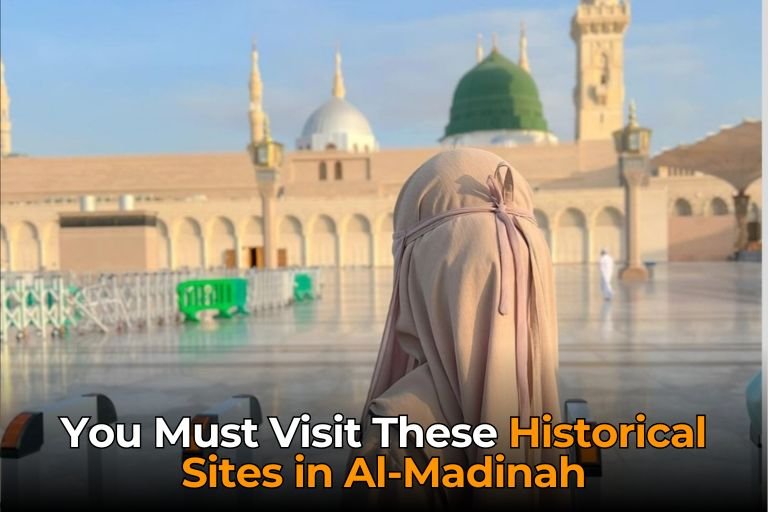


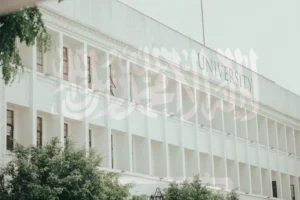
Pingback: Latest Update on Travel to Saudi Arabia: What You Need to Know in 2024
Pingback: How Big is the Empty Quarter? Facts and Figures
Pingback: Centerpoint Riyadh: Your One-Stop Shopping Destination in Saudi Arabia
Pingback: Visiting Masjid Quba, the First Mosque: A Guide for Muslim Travelers
Pingback: 5-Star Hotels in Mecca Offering Comfort and Convenience for Hajj or Umrah
Pingback: Official List: Top 10 Big Cities in Saudi Arabia 2024